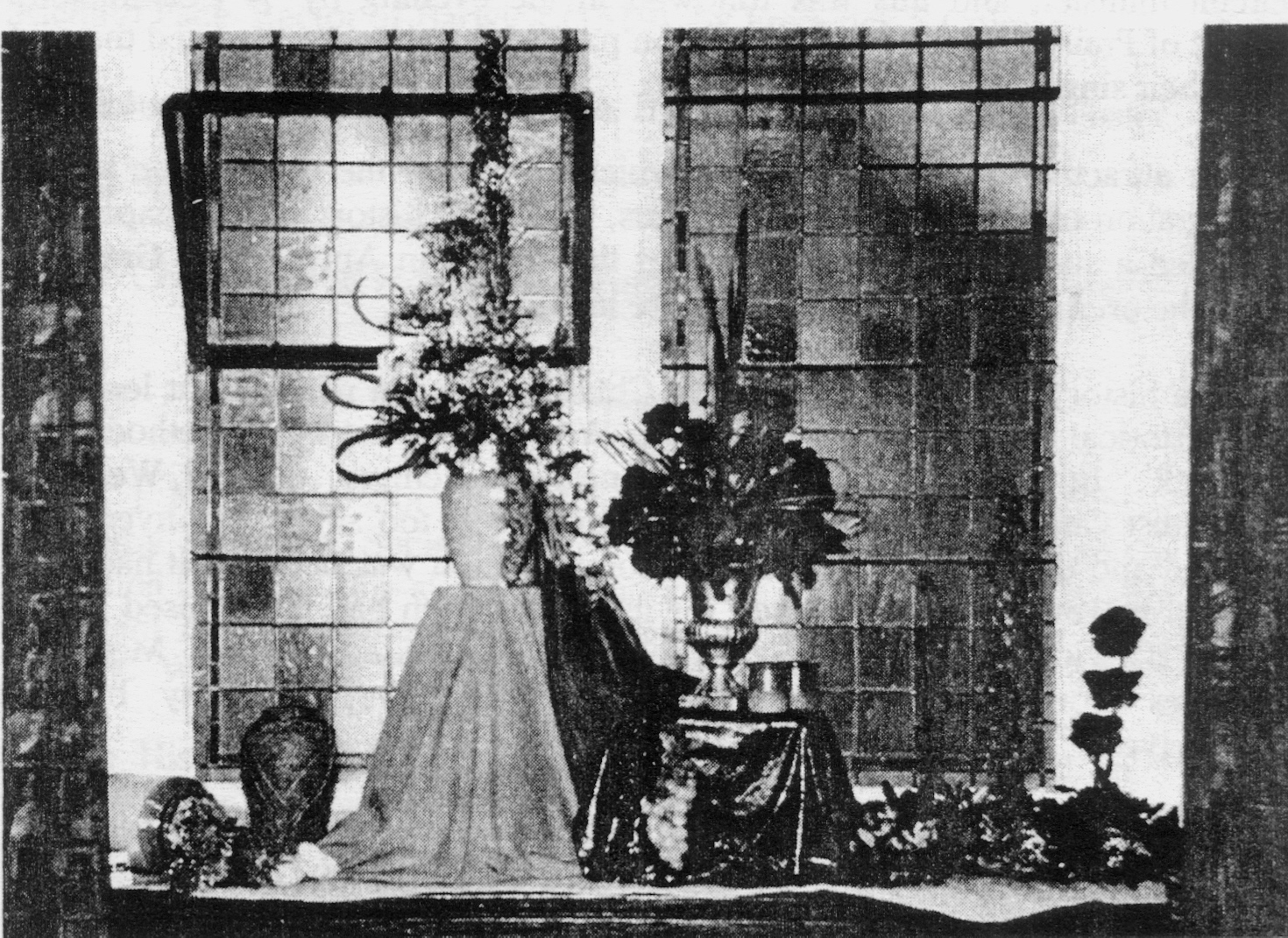| 'The Marriage in Cana' by Margaret Laine and Elaine Picken The original photograph is lost. If it can be found, a better copy will be used |
Some milestones in the history of the chapel in the following century were: 1907 The Trustees list Was renewed and the new body took over the management of the chapel from the Building Committee. 1915. Gas lighting was installed to replace the oil lamps. 1916. In war-time conditions, the premises were insured against aircraft. 1922 Renovations including decoration. some artistic woodwork behind the rostrum and the provision of a safe were carried out - cost £130. 1926-1936 Or Leslie Weatherhead took the Easter Anniversary Services. 1935 Electricity was installed throughout the buildings. 1937-39 Dr Robert Sangster took the Easter Anniversary Services. 1938 The earth closets were replaced by WCs. 1939-45 During the wartime blackout, most of the congregation remained in the vestry after Sunday service to have refreshments and a sing-song. 1950 The organ was electrified. 1955 New boiler was installed, cost of £65, paid for by 'a friend of Barwick'. 1956 The Trustees list was renewed after almost 20 years. It consisted almost entirely of Barwick members and included for the first time, six women. 1963 15 infra red heaters were installed at a cost of £395. 1965 The cellar was altered to make a coffee bar for the new youth club. 1966. A new Trustees list was created after the breaking up of the Brunswick Circuit and the formation of the Richmond Hill Circuit. 1970 The date of Chapel Anniversary celebrations was changed from the Bank Holiday to 12 April (two weeks after Easter). Early 1970s. Renovations of the toilet accommodation were made and a new sink and kitchen units were fitted in the vestry. 1973 The organ of Osmondthorpe Chapel was installed. The back of the chapel was altered to create a new vestry and a store room. 1987 The caretaker's cottage was sold at auction for £35,720. 1989 Overhead electric heaters was installed in the Church and Schoolroom. 1990 A sound amplification system was installed at a cost of £1000. 1990 Repairs and replacement to areas of external stonework, together with repointing, at a cost of £13,518. 1993 Gas central heating was installed at a cost of £6,910. 1995 The kitchen was refitted at a cost of £3,224. 1995 Polycarbonate protection to external windows at a cost of £4,250. 1998 The purchase of an electric piano |
